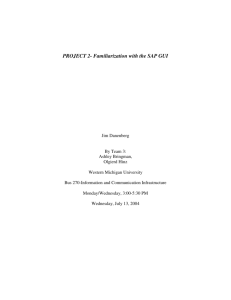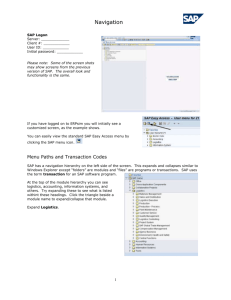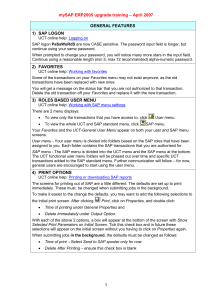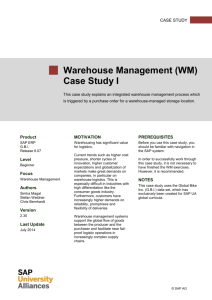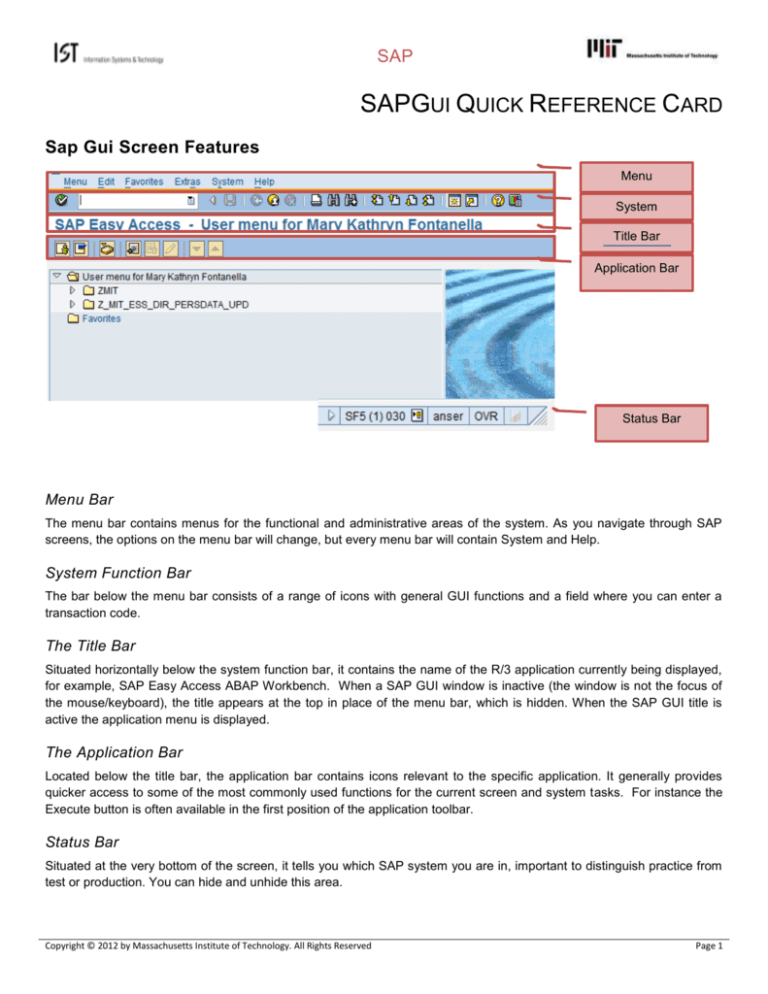
SAP
SAPGUI QUICK REFERENCE CARD
Sap Gui Screen Features
Menu
System
Function Bar
Title Bar
Application Bar
Status Bar
Menu Bar
The menu bar contains menus for the functional and administrative areas of the system. As you navigate through SAP
screens, the options on the menu bar will change, but every menu bar will contain System and Help.
System Function Bar
The bar below the menu bar consists of a range of icons with general GUI functions and a field where you can enter a
transaction code.
The Title Bar
Situated horizontally below the system function bar, it contains the name of the R/3 application currently being displayed,
for example, SAP Easy Access ABAP Workbench. When a SAP GUI window is inactive (the window is not the focus of
the mouse/keyboard), the title appears at the top in place of the menu bar, which is hidden. When the SAP GUI title is
active the application menu is displayed.
The Application Bar
Located below the title bar, the application bar contains icons relevant to the specific application. It generally provides
quicker access to some of the most commonly used functions for the current screen and system tasks. For instance the
Execute button is often available in the first position of the application toolbar.
Status Bar
Situated at the very bottom of the screen, it tells you which SAP system you are in, important to distinguish practice from
test or production. You can hide and unhide this area.
Copyright © 2012 by Massachusetts Institute of Technology. All Rights Reserved
Page 1
SAP
SAP GUI Menus
Menu
<Object>
Edit
Goto
Extras
Description
Usually named after the object you are currently working with, for example,
Material. Contains functions, such as Display, Change, Print, and Exit, that
affect the object in general
Allows you to edit components of the current object. Common functions include
Select, Edit and Copy. The Cancel option allows you to leave a task without
saving the data you have entered.
Allows you to move directly to other screens of the current task. Also contains
the Back option, which takes you back one level in the system hierarchy. Before
going back, the system checks the data you have entered on the current screen
and displays a dialog box, if it detects a problem.
Contains additional functions, which you do not need regularly, but you can
choose, to work with the current object or an object component.
Environment Contains functions that display additional information about the current object
View
Allows you to display the current object in different views, for example,
Settings
Utilities
System
Help
switching between a single-line and double-line display of a table.
Allows you to set user-specific transaction parameters.
Allows you to do object-independent processing, such as deleting, copying, and
printing functions.
Contains functions, such as Create session, User profile, and Log off, that affect
the system in general.
Provides various forms of online help.
SAP GUI Toolbar Buttons
Copyright © 2012 by Massachusetts Institute of Technology. All Rights Reserved
Page 2








